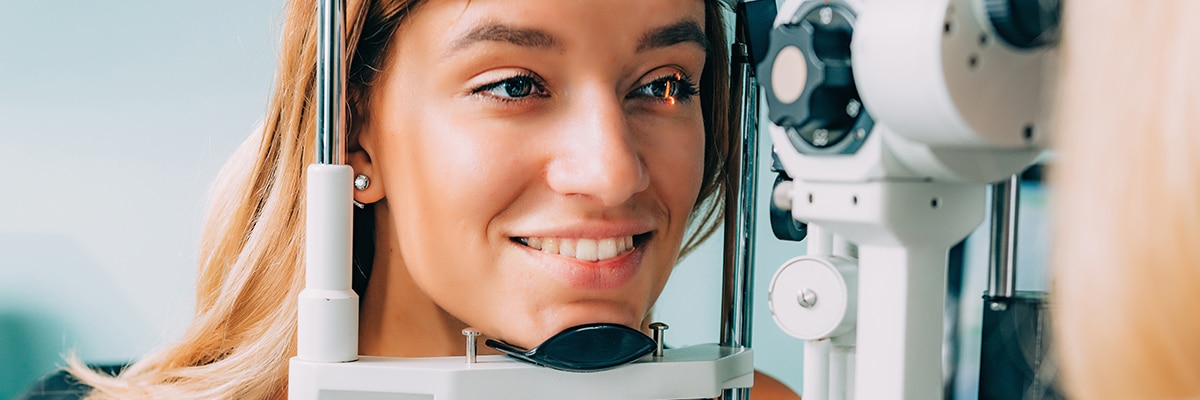In the EBD Blog
Eyesight problems come in many varieties. There are really too many types of vision problems to list in this short amount of space. However, the most common variety of vision problems are, thankfully, pretty benign and can be corrected with a simple pair of glasses or contact lenses.
The common eye problems and symptoms that we deal with usually fall into one or more of the following groups: myopia, hyperopia, astigmatism, and presbyopia.
Myopia, or near-sightedness, is a condition where your distance vision seems blurry. “Distance” in this instance is a very subjective term, as someone with very high myopia may not be able to see clearly beyond a few inches from their face. Most people don’t consider a few inches as distance vision! However, what is really meant here is a near-sighted person sees better at near than they do at distance.
Hyperopia, or far-sightedness, is a condition where your near vision may seem worse than your distance vision. Hyperopia in mild to moderate amounts usually doesn’t affect most people until they get a little older, typically around the age of 40. It is different from presbyopia (more on that later), as it can affect people who are younger than 40 by causing other eye problems and symptoms such as eye strain, headache and blurry vision at all distances after a lot of near work. If the person’s hyperopia is on the higher end of the spectrum, they may not be able to see clearly at any distance regardless of their age.
Astigmatism is perhaps the most misunderstood of the group. Astigmatism affects your fine detail resolution. It makes it difficult to tell the difference between letters and numbers that are of similar shape. For example, a person with a mild degree of astigmatism might have a hard time distinguishing between the letters ‘C’, ‘O’ and ‘D if the letters are small enough or far enough away. Astigmatism also makes glare a problem, particularly at night or in the rain.
Presbyopia is the natural loss of near focusing ability that we all go through as we age. You probably remember your parents or your grand-parents looking for their reading glasses. They were dealing with presbyopia! Presbyopia typically occurs after 40 and affects every person in some way, regardless if they’re myopic, hyperopic, or astigmatic.
Now that we’ve got the more mundane vision problems out of the way, it should be pointed out that experiencing sudden vision changes, or vision problems in one eye and not the other, could signal a real problem. For example, the vision seeming darker in one eye could be a sign of a nerve or blood vessel problem. Another example would be if your current pair of glasses or contacts suddenly stop working. This may be a sign that you have a blood sugar problem, among other things.
There are so many things that our eyes and vision can tell us about our bodies. Don’t neglect them! If you’re experiencing vision problems, even if you think it falls under one of the ‘benign’ conditions above, it’s always a good idea to visit with your eye care professional for peace of mind.







